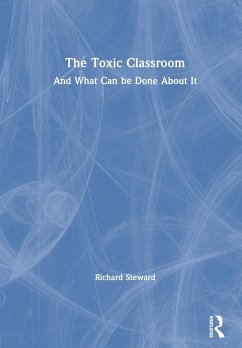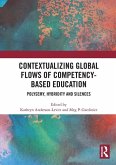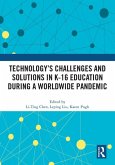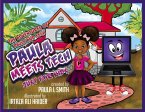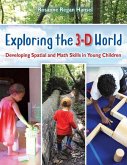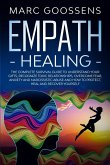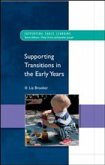- Broschiertes Buch
- Merkliste
- Auf die Merkliste
- Bewerten Bewerten
- Teilen
- Produkt teilen
- Produkterinnerung
- Produkterinnerung
The Toxic Classroom is a wide-ranging look at education today and the impact of political, cultural, pedagogical and technological change on children.
Andere Kunden interessierten sich auch für
![Contextualizing Global Flows of Competency-Based Education Contextualizing Global Flows of Competency-Based Education]() Contextualizing Global Flows of Competency-Based Education53,99 €
Contextualizing Global Flows of Competency-Based Education53,99 €![Technology's Challenges and Solutions in K-16 Education During a Worldwide Pandemic Technology's Challenges and Solutions in K-16 Education During a Worldwide Pandemic]() Technology's Challenges and Solutions in K-16 Education During a Worldwide Pandemic54,99 €
Technology's Challenges and Solutions in K-16 Education During a Worldwide Pandemic54,99 €![The Adventures of Paula and Tech Paula Meets Tech Just for Kids!: Volume 1 The Adventures of Paula and Tech Paula Meets Tech Just for Kids!: Volume 1]() Paula L. SmithThe Adventures of Paula and Tech Paula Meets Tech Just for Kids!: Volume 120,99 €
Paula L. SmithThe Adventures of Paula and Tech Paula Meets Tech Just for Kids!: Volume 120,99 €![Exploring the 3-D World: Developing Spatial and Math Skills in Young Children Exploring the 3-D World: Developing Spatial and Math Skills in Young Children]() Rosanne Regan HanselExploring the 3-D World: Developing Spatial and Math Skills in Young Children33,99 €
Rosanne Regan HanselExploring the 3-D World: Developing Spatial and Math Skills in Young Children33,99 €![Empath Healing The Complete Survival Guide to Understand Your Gifts, Recognize Toxic Relationships, Overcome Fear, Anxiety, and Narcissistic Abuse How to Protect, Heal, and Recover Yourself Empath Healing The Complete Survival Guide to Understand Your Gifts, Recognize Toxic Relationships, Overcome Fear, Anxiety, and Narcissistic Abuse How to Protect, Heal, and Recover Yourself]() Marc GossensEmpath Healing The Complete Survival Guide to Understand Your Gifts, Recognize Toxic Relationships, Overcome Fear, Anxiety, and Narcissistic Abuse How to Protect, Heal, and Recover Yourself16,99 €
Marc GossensEmpath Healing The Complete Survival Guide to Understand Your Gifts, Recognize Toxic Relationships, Overcome Fear, Anxiety, and Narcissistic Abuse How to Protect, Heal, and Recover Yourself16,99 €![Supporting Transitions in the Early Years Supporting Transitions in the Early Years]() Liz BrookerSupporting Transitions in the Early Years31,99 €
Liz BrookerSupporting Transitions in the Early Years31,99 €![The Glocalization of Early Childhood Curriculum The Glocalization of Early Childhood Curriculum]() Philip Hui LiThe Glocalization of Early Childhood Curriculum57,99 €
Philip Hui LiThe Glocalization of Early Childhood Curriculum57,99 €-
-
-
The Toxic Classroom is a wide-ranging look at education today and the impact of political, cultural, pedagogical and technological change on children.
Hinweis: Dieser Artikel kann nur an eine deutsche Lieferadresse ausgeliefert werden.
Hinweis: Dieser Artikel kann nur an eine deutsche Lieferadresse ausgeliefert werden.
Produktdetails
- Produktdetails
- Verlag: Taylor & Francis
- Seitenzahl: 188
- Erscheinungstermin: 24. Juli 2020
- Englisch
- Abmessung: 249mm x 173mm x 15mm
- Gewicht: 476g
- ISBN-13: 9780367424688
- ISBN-10: 0367424681
- Artikelnr.: 68693816
- Herstellerkennzeichnung
- Libri GmbH
- Europaallee 1
- 36244 Bad Hersfeld
- gpsr@libri.de
- Verlag: Taylor & Francis
- Seitenzahl: 188
- Erscheinungstermin: 24. Juli 2020
- Englisch
- Abmessung: 249mm x 173mm x 15mm
- Gewicht: 476g
- ISBN-13: 9780367424688
- ISBN-10: 0367424681
- Artikelnr.: 68693816
- Herstellerkennzeichnung
- Libri GmbH
- Europaallee 1
- 36244 Bad Hersfeld
- gpsr@libri.de
Richard Steward is an educational consultant with extensive experience as a teacher and headteacher. He has taught in a variety of schools in a 30-year career and has worked as a part-time lecturer with The Open University. He has worked with the National College for Teaching and Learning and been involved in a wide range of national educational research projects. His previous book is titled, The Gradual Art of School Improvement, and he can be found on twitter @StewardRichard.
Introduction
1. What is it like to be a child in school today?
An early start
Working with others
Parents
Poverty and neglect
Fear of failure
Social media
Mental health
Boredom
Schools are the answer
Toxic schooling
What can schools do now to put things right?
What should policymakers do to put thing right?
2. The curriculum
The background
Where are we now? The foundation stage
Where are we now? Primary education
Where are we now? Secondary education
Where are we now? Post-16 education
Destination university
What should children be learning in school?
What can schools do now to put things right?
What should policymakers do to put thing right?
3. The core subjects
English
Mathematics
Science
Computing
Languages
The humanities
Conclusion
What can schools do now to put things right?
What should policymakers do to put thing right?
4. Beyond the core
The arts
Design technology
Physical education
PSHE/citizenship
Studies and 'ologies'
Vocational subjects
Extra-curricular
Conclusion
What can schools do now to put things right?
What should policymakers do to put thing right?
5. Assessment and accountability
Early years testing
Primary testing
Secondary assessment
Assessment post-16
Ofsted - a new hope?
What can schools do now to put things right?
What should policymakers do to put thing right?
6. Structures
Academies
Free schools
Multi-academy trusts
Grammar schools
Independent schools
Faith schools
Beyond the mainstream
Admissions
Departures
A final thought on age
What can schools do now to put things right?
What should policymakers do to put thing right?
7. A wider view
What happened to the learning culture?
Education, childcare or social service?
Educating for global citizenship
What can schools do now to put things right?
What should policymakers do to put thing right?
8. A vision for the future
Independent, grammar and faith schools
Structural confusion
Age and stage
Governance
What can schools do now to put things right?
What should policymakers do to put thing right?
9. A 21st century curriculum
The curriculum
A modest proposal
Summary: a curriculum model for the future
10. Conclusion: detoxifying the classroom
What are children learning for?
Putting things right
Painting in oils
Appendix
Index
1. What is it like to be a child in school today?
An early start
Working with others
Parents
Poverty and neglect
Fear of failure
Social media
Mental health
Boredom
Schools are the answer
Toxic schooling
What can schools do now to put things right?
What should policymakers do to put thing right?
2. The curriculum
The background
Where are we now? The foundation stage
Where are we now? Primary education
Where are we now? Secondary education
Where are we now? Post-16 education
Destination university
What should children be learning in school?
What can schools do now to put things right?
What should policymakers do to put thing right?
3. The core subjects
English
Mathematics
Science
Computing
Languages
The humanities
Conclusion
What can schools do now to put things right?
What should policymakers do to put thing right?
4. Beyond the core
The arts
Design technology
Physical education
PSHE/citizenship
Studies and 'ologies'
Vocational subjects
Extra-curricular
Conclusion
What can schools do now to put things right?
What should policymakers do to put thing right?
5. Assessment and accountability
Early years testing
Primary testing
Secondary assessment
Assessment post-16
Ofsted - a new hope?
What can schools do now to put things right?
What should policymakers do to put thing right?
6. Structures
Academies
Free schools
Multi-academy trusts
Grammar schools
Independent schools
Faith schools
Beyond the mainstream
Admissions
Departures
A final thought on age
What can schools do now to put things right?
What should policymakers do to put thing right?
7. A wider view
What happened to the learning culture?
Education, childcare or social service?
Educating for global citizenship
What can schools do now to put things right?
What should policymakers do to put thing right?
8. A vision for the future
Independent, grammar and faith schools
Structural confusion
Age and stage
Governance
What can schools do now to put things right?
What should policymakers do to put thing right?
9. A 21st century curriculum
The curriculum
A modest proposal
Summary: a curriculum model for the future
10. Conclusion: detoxifying the classroom
What are children learning for?
Putting things right
Painting in oils
Appendix
Index
Introduction
1. What is it like to be a child in school today?
An early start
Working with others
Parents
Poverty and neglect
Fear of failure
Social media
Mental health
Boredom
Schools are the answer
Toxic schooling
What can schools do now to put things right?
What should policymakers do to put thing right?
2. The curriculum
The background
Where are we now? The foundation stage
Where are we now? Primary education
Where are we now? Secondary education
Where are we now? Post-16 education
Destination university
What should children be learning in school?
What can schools do now to put things right?
What should policymakers do to put thing right?
3. The core subjects
English
Mathematics
Science
Computing
Languages
The humanities
Conclusion
What can schools do now to put things right?
What should policymakers do to put thing right?
4. Beyond the core
The arts
Design technology
Physical education
PSHE/citizenship
Studies and 'ologies'
Vocational subjects
Extra-curricular
Conclusion
What can schools do now to put things right?
What should policymakers do to put thing right?
5. Assessment and accountability
Early years testing
Primary testing
Secondary assessment
Assessment post-16
Ofsted - a new hope?
What can schools do now to put things right?
What should policymakers do to put thing right?
6. Structures
Academies
Free schools
Multi-academy trusts
Grammar schools
Independent schools
Faith schools
Beyond the mainstream
Admissions
Departures
A final thought on age
What can schools do now to put things right?
What should policymakers do to put thing right?
7. A wider view
What happened to the learning culture?
Education, childcare or social service?
Educating for global citizenship
What can schools do now to put things right?
What should policymakers do to put thing right?
8. A vision for the future
Independent, grammar and faith schools
Structural confusion
Age and stage
Governance
What can schools do now to put things right?
What should policymakers do to put thing right?
9. A 21st century curriculum
The curriculum
A modest proposal
Summary: a curriculum model for the future
10. Conclusion: detoxifying the classroom
What are children learning for?
Putting things right
Painting in oils
Appendix
Index
1. What is it like to be a child in school today?
An early start
Working with others
Parents
Poverty and neglect
Fear of failure
Social media
Mental health
Boredom
Schools are the answer
Toxic schooling
What can schools do now to put things right?
What should policymakers do to put thing right?
2. The curriculum
The background
Where are we now? The foundation stage
Where are we now? Primary education
Where are we now? Secondary education
Where are we now? Post-16 education
Destination university
What should children be learning in school?
What can schools do now to put things right?
What should policymakers do to put thing right?
3. The core subjects
English
Mathematics
Science
Computing
Languages
The humanities
Conclusion
What can schools do now to put things right?
What should policymakers do to put thing right?
4. Beyond the core
The arts
Design technology
Physical education
PSHE/citizenship
Studies and 'ologies'
Vocational subjects
Extra-curricular
Conclusion
What can schools do now to put things right?
What should policymakers do to put thing right?
5. Assessment and accountability
Early years testing
Primary testing
Secondary assessment
Assessment post-16
Ofsted - a new hope?
What can schools do now to put things right?
What should policymakers do to put thing right?
6. Structures
Academies
Free schools
Multi-academy trusts
Grammar schools
Independent schools
Faith schools
Beyond the mainstream
Admissions
Departures
A final thought on age
What can schools do now to put things right?
What should policymakers do to put thing right?
7. A wider view
What happened to the learning culture?
Education, childcare or social service?
Educating for global citizenship
What can schools do now to put things right?
What should policymakers do to put thing right?
8. A vision for the future
Independent, grammar and faith schools
Structural confusion
Age and stage
Governance
What can schools do now to put things right?
What should policymakers do to put thing right?
9. A 21st century curriculum
The curriculum
A modest proposal
Summary: a curriculum model for the future
10. Conclusion: detoxifying the classroom
What are children learning for?
Putting things right
Painting in oils
Appendix
Index

